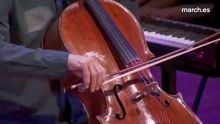Content:
Introduction
Catching扁鱼, a species known for its distinctive flat, disc-like body, can be both a challenging and rewarding experience for anglers.扁鱼, also known as flounder or sole, are found in various coastal and brackish waters around the world. To successfully hook these elusive creatures, one must employ a set of specialized fishing techniques. In this article, we will delve into the art of catching扁鱼, offering a comprehensive guide on the best methods, baits, and equipment to use.
Choosing the Right Equipment
Rod and Reel: For扁鱼 fishing, a light to medium-action rod is ideal. The rod should be at least 6 to 8 feet long to provide enough sensitivity for delicate presentations. A spinning reel is commonly used due to its ease of casting and retrieving.

Line: Use a monofilament line with a breaking strength of 6 to 12 pounds. This is sufficient to handle the fight of a typical扁鱼 without being too heavy to cast effectively.
Hooks: Small to medium-sized hooks, typically ranging from 1/0 to 3/0, are suitable for catching扁鱼. Jigheads are often preferred for their ability to mimic natural prey and provide a steady retrieve.
Leaders: A leader of 18 to 24 inches in length with a 30 to 50-pound test is necessary to prevent detection by the cautious扁fish. Fluorocarbon leaders are best due to their low visibility in the water.
Choosing the Right Bait
Natural Baits: Live or dead shrimp, crabs, and small fish are highly effective for attracting扁鱼. Live bait is preferable as it offers a more realistic and appealing meal for the fish.
Artificial Baits: Soft plastics, such as Gulp! baits or paddletails, can be deadly when used to mimic small fish or crustaceans. Hard-bodied lures like spinners or spoons can also be effective, especially when fished near the bottom.
Fishing Techniques
Locating扁鱼:扁鱼通常栖息在水底或靠近水底,寻找平坦的沙质或泥质底质区域是关键,使用鱼探仪可以帮助定位鱼群。
Drop Shot Technique: This technique involves dropping a bait to the bottom and then slowly retrieving it. It's particularly effective for catching bottom-hugging扁鱼. Start with a slow retrieve and vary the speed to see what triggers a bite.
Grassley Rig: The grassley rig is a specialized setup that includes a heavy jighead, a sinker, and a soft plastic lure. This rig is ideal for fishing in areas with heavy cover, as it allows the bait to remain close to the bottom.
Bottom Bouncing: This technique involves slowly dragging a bait or lure along the bottom, mimicking the movement of small fish or crustaceans. It's effective in areas with a lot of structure, such as rocks or oyster beds.
Jigging: Jigging involves repeatedly lifting and dropping a lure in short, quick bursts. This technique can be effective in areas with a lot of movement, as it can trigger a strike from curious扁fish.
Tips for Success
- Patience is Key:扁鱼通常比较警觉,因此在等待咬钩时要保持耐心。
- Adjust Your Technique: Be prepared to change your approach based on the behavior of the fish. If you're not getting bites, try varying the speed of your retrieve, changing your bait, or adjusting your rig.
- Keep Your Equipment Clean: Regularly check your hooks, lines, and leaders for any signs of damage or wear. A well-maintained setup is more likely to result in successful catches.
- Respect the Environment: Always practice catch-and-release when possible, especially with扁鱼这样的底栖鱼类,以保护海洋生态平衡。
Conclusion
Catching扁鱼是一项需要耐心和技巧的钓鱼活动。 By understanding the behavior of these fish, selecting the right equipment and bait, and employing effective fishing techniques, anglers can increase their chances of hooking into these flat, elusive creatures. Whether you're a seasoned angler or a beginner, mastering the art of catching扁鱼 is a rewarding experience that can lead to countless hours of fun on the water.












